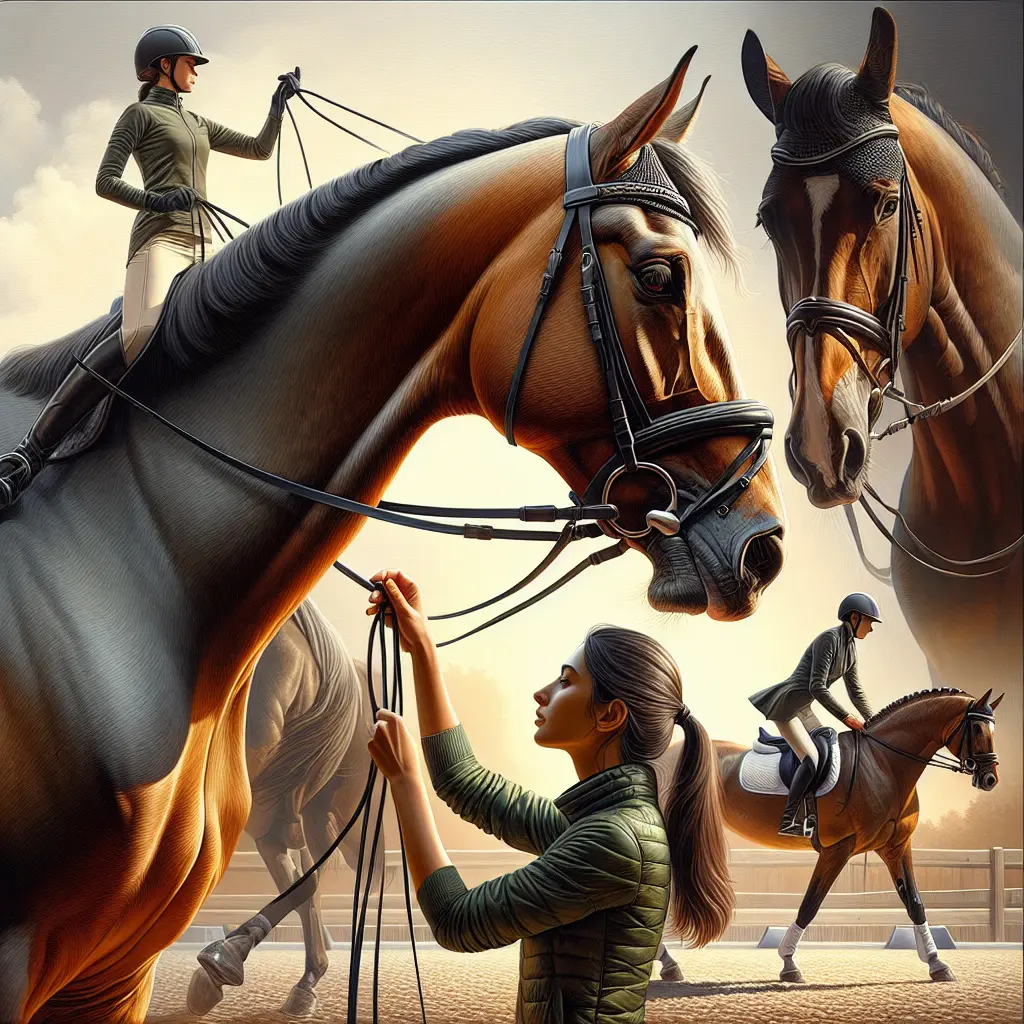To Pat or Scratch: Reevaluating Horse-Rider Interactions
When it comes to the world of horse-riding, one might believe that the skills required are only about mastering the reins or perfecting posture. However, the nuances extend far beyond that. Horse-rider interactions are complex, intricate, and essential for both the horse's comfort and the rider's success. In this article, we'll explore how simple gestures, like patting or scratching, impact the relationship and communication between horses and riders.
The Foundations of Horse-Rider Communication
Communication is not just about commands; it's about understanding subtle cues and feedback between the rider and the horse. A seamless connection, often referred to as "contact", is vital. This contact, according to Dressage Today, must be soft, relaxed, and respectful, ensuring the horse feels comfortable and relaxed[1]. Forced contact can over-stimulate the horse's mouth, which is a sensitive area. Ideally, the horse should move in a balanced and calm manner to demonstrate effective communication.
The Role of Touch in Horse-Rider Interactions
Touch is a powerful communication tool, both among humans and with animals. Patting is often used as a congratulatory note to horses, yet it may surprise you that not all horses appreciate it. On the flip side, scratching—the kind done where horses tend to itch, like the withers—is universally enjoyed, strengthening bonds. Recognizing these preferences is key to building a positive relationship with your equine partner.
Biomechanics and Harmony
The physical interaction between horse and rider is orchestrated by biomechanics. Everything from the rider's posture to movement affects the horse's comfort. An article on Riders' Biomechanics suggests that these movements impact how horses perform and respond [2]. In precision sports like dressage, even minor posture changes can affect the horse's gait, underscoring the importance of harmony and balance.
Practical Exercises for Improved Interaction
Creating a harmonious bond with your horse goes beyond just physical cues. Here are some exercises that can enhance both connection and physical coordination:
Lateral Flexion Exercises
The benefits of lateral flexion are immense. It helps to supple the horse's neck muscles, promoting balance and allowing for better communication. Training on the circle is particularly effective in establishing lateral flexion, pushing riders and horses to work in symphony.
Gait Transitions
Smoothly transitioning through gaits—say, from walk to trot—signifies mutual trust. The horse is learning to follow cues seamlessly, reinforcing the rider-horse bond. This trust also enhances the communication link, enabling a more unified ride.
Posture and Balance Training
Maintaining a balanced posture translates to increased comfort for the horse. Riding isn't just about looking graceful; it's about ensuring the horse can also perform without discomfort. Proper posture involves distributing weight properly and enabling smooth transitions between different gaits, as suggested by research on horse-rider interaction [3].
Understanding Each Horse's Needs
Every horse, akin to humans, has its unique personality and preferences. While some may respond enthusiastically to pats, others might shy away. Similarly, scratching might become a bonding experience that a particular horse relishes. Understanding individual needs is crucial for developing meaningful interactions.
Equestrian Apparel - Enhancing the Ride
Equipping yourself appropriately is another facet of smooth horse-rider interaction. Just as gestures are important, so too are the right apparels. The Jodhpur Collection at 'Just Horse Riders' offers comfort and flexibility, perfect for keeping balance in control and ensuring that nothing stands in the way of a great ride.
Beyond Physicality: Mental Well-being
The mental health of horses is just as paramount as physical. Supplements, like those from the Everyday Vitamins & Supplements collection, provide them with essential nutrients for overall well-being. A well-balanced horse will be more responsive and engaged, improving interactions.
Dress and Be Ready
For the rider, accessories like horse riding boots, gloves, and riding socks are essential. These don't just serve functionally but also ensure that the rider remains comfortable and poised, protecting them while offering the best riding experience possible.
Conclusion: To Pat or Scratch?
At the crossroads of exploring horse-rider interactions, it is evident that the smallest movements can have significant impacts. This involves a combination of emotional communication and physical synchrony governed by biomechanical principles. Every pat or scratch strengthens the bond, provided it respects the horse's boundaries. As you continue to delve into these interactions, remember: a well-tended relationship with your horse leads to a more enjoyable and fulfilling equestrian experience. So, whether you choose to pat or scratch, do so with knowledge, care, and respect.





